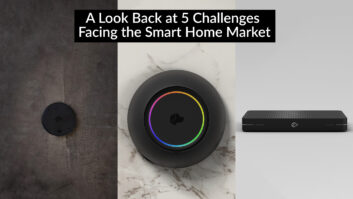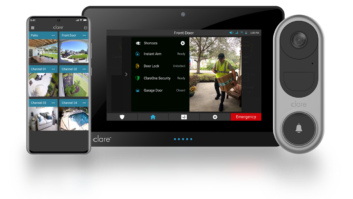While 5G is still an estimated two years out from deployment, its effect on the consumer electronics industry is already readily accepted. As with previous next-gen wireless technologies, the advancement will continue to roll the wheel of progress forward–this time at exponential speeds.
Although the immediate impact of 5G on the smart home and custom integration may not be immediate, eventually it may mean less reliance on a dedicated Wi-Fi network for families who use their cell phones as their primary device for viewing content. In the near term, most 5G will be complimentary to but not replace the local area network. It may, however, be used as the WAN gateway that then connects to the client’s LAN. With multi-gigabit speed and potential 1ms latency, the service may provide a better experience than traditional hardwired ISPs.
“The potential of 5G, along with the possibilities of IPv6 create a combination where it’s possible that there is no need to have a LAN in the home,” said CEDIA’s VP of emerging technologies, Dave Pedigo. “This is likely overstated a bit for the next decade or so, but probably not much longer after that, in my opinion. When Michio Kaku gave the keynote at the 2012 CEDIA EXPO, he stated that, ‘In the future, the internet will be everywhere and nowhere.’ I believe he is ultimately right in the long run; 5G has the potential to make LAN-based internet in the home obsolete. But, it is going to take quite some time for that to come to fruition.
Henry Clifford, president of Livewire, believes that new 5G offerings will make the technology solutions from custom integrators work more seamlessly as consumers transition throughout the day. “Hopping from home Wi-Fi to mobile 5G won’t seem like a big deal anymore,” he offered.
For some, the concept of paying for a fixed-premise 5G system will seem funny, Clifford noted. “Watch for wireless providers to hand out hubs until the hardware world starts baking in 5G into electronics or 5G figures out how to serve up native 802.11ac,” he said.
Other possibilities suggested by Clifford include better video surveillance in remote areas and longer battery life for electronics. In short, he says, 5G will remove friction and encourage more ubiquitous use of electronics, artificial assistance/intelligence and further strengthen consumer confidence in the cloud as a place to store valuable information. For the remote support elements of the CI business, 5G will enable integrators to proactively service more clients who might have not had proper internet service.
Gordon van Zuiden, president of cyberManor Inc., pointed to the ability for 5G to provide local redundancy of cloud-based thin client products–improving security, reliability, and performance.
“In that way I can see 5G as being just another broadband source to the home’s router and home control processors on the home’s LAN–and not a direct highway for the replacement of these local router/control products,” he said. “In a similar design infrastructure concept, we often add iPads for total home control, but we still don’t replace light switches or thermostats in case our home control systems go down.”
Industry consultant Michael Heiss believes that 5G will simply provide the opportunity to leverage technology in areas where existing infrastructure can’t support bandwidth requirements. “Across North America, the current infrastructure is old and outdated, and in many situations deploying fiber is an extremely cost prohibitive situation,” he said. “Yet, 5G allows providers to deploy this technology and increase their infrastructure capabilities into high density and rural environments.”







